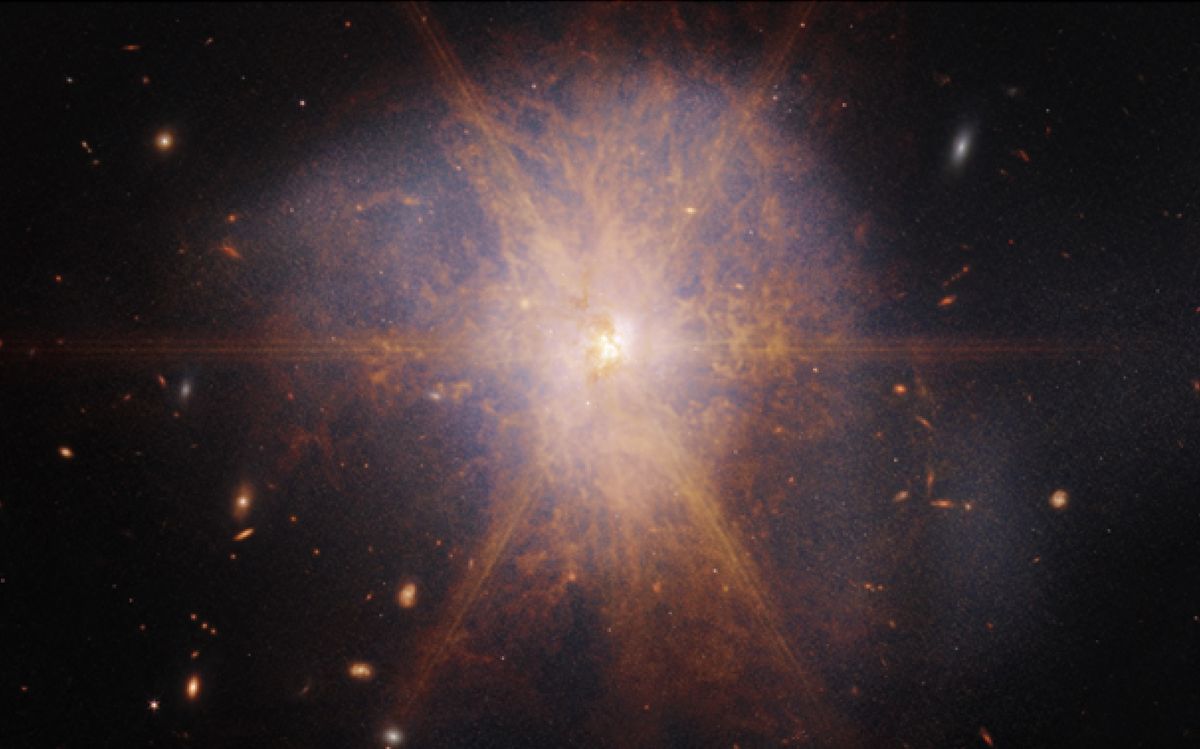We won't be around to watch our Milky Way galaxy fuse with its closest neighbor, Andromeda, a few billion years from now.
But we're getting a spectacular front-row seat to another galactic merger, thanks to NASA's powerful James Webb Space Telescope (JWST or Webb).
A newly released JWST photo captures two galaxies collectively called Arp 220, which are now merging 250 million light-years from Earth in the constellation Serpens (the Serpent).
Galaxy mergers unfold for a long time, even on cosmic timescales.
Astronomers think the galaxies of Arp 220, which are spirals like the Milky Way and have similar tails swirling in their outskirts, began blending 700 million years ago.
(For reference, the Milky Way galaxy will closely approach Andromeda in the next four to five billion years, and the merger itself will span 10 billion years.)
Source
But we're getting a spectacular front-row seat to another galactic merger, thanks to NASA's powerful James Webb Space Telescope (JWST or Webb).
A newly released JWST photo captures two galaxies collectively called Arp 220, which are now merging 250 million light-years from Earth in the constellation Serpens (the Serpent).
Galaxy mergers unfold for a long time, even on cosmic timescales.
Astronomers think the galaxies of Arp 220, which are spirals like the Milky Way and have similar tails swirling in their outskirts, began blending 700 million years ago.
(For reference, the Milky Way galaxy will closely approach Andromeda in the next four to five billion years, and the merger itself will span 10 billion years.)
Source






















